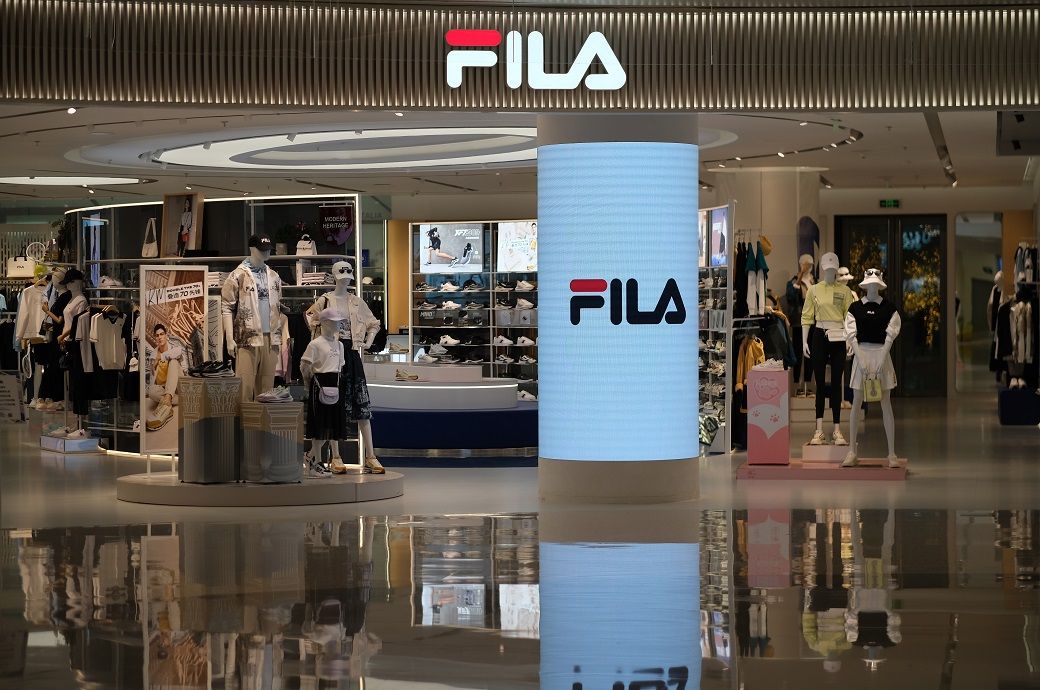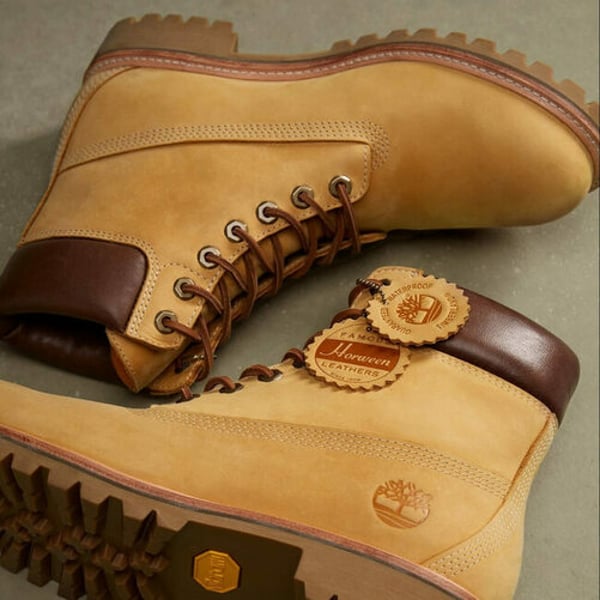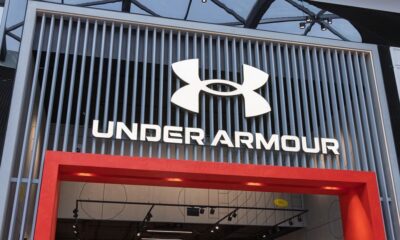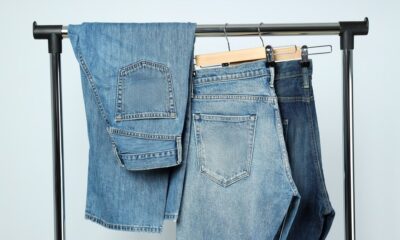Fashion
South Korea’s Misto Holdings posts solid Q3 with revenue up 3.7% YoY

The Misto segment generated 181 billion won in revenue, supported by Fila’s continued brand repositioning in Korea and the successful launch of the new Echappe series, which resonated strongly with Millennial and Gen Z consumers. Fila’s new brand experience centre in Biella, Italy, further enhanced global visibility. Restructuring measures in North America also helped reduce losses and strengthened overall profitability, Misto Holdings said in a press release.
Misto Holdings has reported revenue of 1,088 billion won (~$747 million) in Q3 2025, up 3.7 per cent YoY with operating profit rising 41 per cent to 132 billion won.
Fila’s repositioning and Acushnet’s 7.5 per cent revenue rise supported performance.
A 940-won dividend lifted shareholder returns to 220 billion won (~$151 million), achieving 44 per cent of the firm’s three-year target.
Acushnet delivered another robust quarter, with revenue rising 7.5 per cent YoY to 908 billion won. Misto Holdings’ board of directors approved a quarterly dividend of 940 won per share—its fourth consecutive special dividend—totalling around 50.4 billion won. This represents a 177 per cent year-on-year increase and reflects strong subsidiary performance and special dividends received from Full Prospect, its China joint venture.
The company has now achieved 44 per cent of its three-year shareholder-return target of up to 500 billion won for 2025-2027. Total returns so far amount to approximately 220 billion won (~$151 million), supported by 150 billion won in share buybacks earlier in the year and an additional 20 billion won in September.
“Despite a challenging external environment, Misto Holdings maintained stable performance in the third quarter, supported by disciplined operations and solid brand fundamentals. The fourth consecutive special dividend demonstrates our ongoing commitment to transparent, shareholder-friendly management and long-term value creation,” said Ho Yeon (Aaron) Lee, chief financial officer of Misto Holdings.
Fibre2Fashion News Desk (SG)
Fashion
J.Jill names first-ever chief growth officer

Published
November 19, 2025
J.Jill Inc. announced on Wednesday the appointment of Viv Rettke to the newly created role of chief growth officer, effective November 19.
In her new role, Rettke will be responsible for direct channel performance, and will work with the senior leadership team on a holistic growth strategy aligning brand, marketing, and direct and retail sales channels. She will also lead the company’s AI initiatives.
Rettke will report directly to CEO and president, Mary Ellen Coyne.
A consumer industry veteran across the fashion, footwear, and food and beverage categories, Rettke joine the American fashion retailer from Cole Haan, where she served as chief strategy and transformation officer. Prior to that, she was head of transformation at Reebok, after holding a series of roles of increasing responsibility at Kraft Heinz. Earlier in her career, she was a consultant with Boston Consulting Group and a senior analyst and manager with CitiFinancial.
“We are thrilled to welcome Viv Rettke to the J.Jill team as our first Chief Growth Officer,” said Coyne.
“She has a proven ability to accelerate business growth at leading companies in fashion and other consumer industries. We’re confident her deep expertise across brand building, corporate strategy, business transformation, and retail sales and operations will help us realize the untapped potential to expand our customer file and unlock new efficiencies and market opportunities.”
The appointment comes just months after J.Jill announced the appointment of Courtney O’Connor, as senior vice president and chief merchandising officer, in June.
Copyright © 2025 FashionNetwork.com All rights reserved.
Fashion
Timberland opens first store in Detroit

Published
November 19, 2025
Timberland has opened its first retail store in Detroit.
The VF Corp.-owned brand opened the doors to its new 1,400-square-foot location at 1217 Woodward Avenue in Michigan, on Friday, with a full assortment of men’s and women’s footwear, apparel, and accessories, along with footwear for kids.
Notably, the footwear offering highlights some of Timberland’s most iconic silhouettes, including the 6-Inch Premium Waterproof Boots, Field Boots, Euro Hikers, and 3-Eye Handsewn Boat Shoes for men. Women’s selections highlight the 6-Inch Premium Waterproof Boots, Noreen Boat Shoes, and the brand’s new Stone Street collection. Apparel centres largely on outerwear.
Designed to reflect Timberland’s rugged-outdoors-meets-urban-utility aesthetic, the space is characterized by oak wood, brushed steel fixtures, textured concrete walls, and leather accents throughout.
The new flagship complements Timberland’s existing presence in the region, which includes an outlet store at Great Lakes Crossing in Auburn Hills. The opening follows a new retail store at Roosevelt Field in Garden City, New York, which made its debut in October.
VF Corporation’s revenue reached $2.8 billion in the second quarter of the 2026 financial year, rising 2% year over year, it announced on October 28. Timberland reported 7% growth to $506.4 million, during the quarter.
Copyright © 2025 FashionNetwork.com All rights reserved.
Fashion
Bangladesh plans to boost apparel exports to Japan

For apparel-producing countries, Japan’s expanding market presents an attractive opportunity, and Bangladesh, one of the world’s leading garment exporters, is increasingly seeking to strengthen its foothold in this market.
With Japan reportedly reducing its reliance on China, Bangladesh apparel exporters see an opportunity to boost RMG exports to Japan.
The ongoing Bangladesh–Japan Economic Partnership Agreement (EPA), expected to conclude by the end of 2025, which aims to lower tariffs and ease trade processes, is expected to give a further boost to Bangladesh’s exports to the lucrative Japanese market.
Bangladesh apparel makers are turning their focus towards Japan at a strategic time. With negotiations for a Bangladesh–Japan Economic Partnership Agreement (EPA) already underway and expected to conclude by the end of 2025, both nations are seeking to deepen their trade and investment ties. The EPA aims to create a framework that would lower tariffs, simplify trade procedures, and facilitate greater market access for Bangladeshi products.
For Bangladesh, the economy of which relies heavily on readymade garments, the EPA represents an opportunity to expand exports and diversify beyond its traditional export strongholds of the United States and the European Union.
Industry leaders believe that with the EPA, rising Japanese interest in the China Plus One sourcing strategy, and Bangladesh’s increasing focus on quality and sustainability, the country now stands at a pivotal moment to increase its apparel exports to Japan.
Even though China remains Japan’s largest supplier of apparel, its dominance has been gradually eroding. Estimates suggest that China’s share in Japan’s apparel imports dropped from over 55 per cent in 2022 to about 46.88 per cent in early 2025.
Interestingly, this decline has not been accompanied by a fall in Japan’s total apparel imports, indicating that Japanese retailers are not cutting back on demand but are instead diversifying their sourcing networks.
The growing interest in the ‘China Plus One’ strategy—under which Japanese companies seek to reduce dependence on China by sourcing from alternative locations—has positioned Bangladesh as a viable and competitive option for sure even if Bangladesh’s apparel exports to Japan have also shown consistent growth over the past few years, reflecting both the shifting dynamics in Japanese sourcing and Bangladesh’s increasing competitiveness.
As per some estimates, Bangladesh’s exports rose from $944.82 million in the fiscal 2020–21 to $1.41 billion in 2024–25, while industry observers noted that this upward trajectory highlights a strong foundation for further expansion, particularly as Bangladeshi manufacturers invest in quality and value-added production to meet Japanese standards.
The Japanese fashion market is often described as one of the most challenging in the world, with consumers who value craftsmanship, attention to detail, and durability over mass-produced, low-cost alternatives.
This presents both a challenge and an opportunity for Bangladeshi exporters. “Japan’s fashion market is unique in the sense that gaining Japanese buyers’ trust is not that easy,” said one apparel manufacturer, adding, “The market is driven by a sophisticated consumer base that values craftsmanship, and the emphasis on quality is extremely high. Long-term communication and consistent efforts are essential to building trust and successfully entering the Japanese market.”
To cater to such expectations, many Bangladeshi garment factories are enhancing compliance, upgrading technology, and focusing on sustainability—factors that align well with Japan’s growing preference for ethical and environmentally responsible production.
Japanese buyers, known for long-term partnerships once trust is established, often prioritise reliability and transparency across the supply chain and recognising this, Bangladeshi entities are working to strengthen their reputation through improved product standards, timely delivery, and investments in eco-friendly production processes.
Industry insiders believe that the combination of Japan’s sourcing diversification, the upcoming Economic Partnership Agreement, and Bangladesh’s improving manufacturing capabilities will open new growth opportunities in the lucrative Japanese market.
While challenges remain in meeting Japan’s stringent quality benchmarks and cultural expectations, the potential rewards are significant, and by demonstrating reliability, consistency, and commitment to sustainability, Bangladesh can position itself as a key partner in Japan’s apparel supply chain, claimed the industry insiders, to wind up on a positive note.
Fibre2Fashion News Desk (DR)
-

 Tech5 days ago
Tech5 days agoNew carbon capture method uses water and pressure to remove CO₂ from emissions at half current costs
-

 Politics6 days ago
Politics6 days agoBritish-Pakistani honoured for transforming UK halal meat industry
-

 Business5 days ago
Business5 days agoThese 9 Common Money Mistakes Are Eating Your Income
-

 Sports4 days ago
Sports4 days agoTexas A&M officer scolds South Carolina wide receiver after touchdown; department speaks out
-

 Business5 days ago
Business5 days agoWhat’s behind Rachel Reeves’s hokey cokey on income tax rises?
-

 Tech6 days ago
Tech6 days ago$25 Off Exclusive Blue Apron Coupon for November 2025
-

 Sports5 days ago
Sports5 days agoApple scrapping MLS Season Pass service in ’26
-

 Fashion7 days ago
Fashion7 days agoAdidas & Patrick Mahomes expand NIL programme with Texas Tech athletes


















